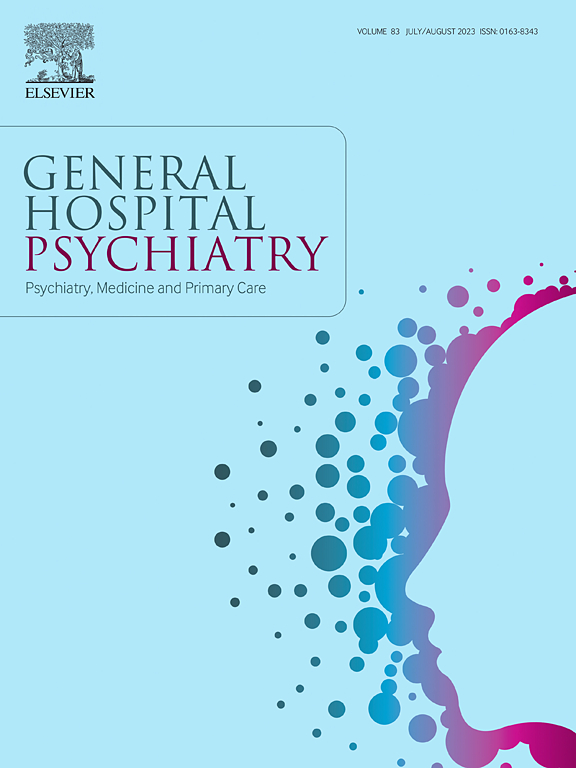大流行后印度的远程精神病学:对远程医疗与面对面咨询的患者观点和偏好的混合方法探索。
IF 4.1
2区 医学
Q1 PSYCHIATRY
引用次数: 0
摘要
背景:在2019冠状病毒病大流行期间,当传统医疗机构无法进入时,远程精神病学得到了广泛接受。然而,大流行后,用户对这项服务的偏好仍然不确定。本研究探讨了用户对远程精神病学的看法,特别关注那些停止使用远程精神病学的人,以确定影响服务满意度的因素和继续使用的障碍。方法:对印度北部一家三级护理教学医院使用远程精神病学服务的165名患者进行了一项混合方法研究。收集了远程精神病学辍学率的定量数据,并通过双变量分析确定了继续使用和停止使用之间的差异。通过半结构化访谈收集定性数据,进行主题分析和编码,以检查服务选择的个人、疾病相关和社会环境决定因素。结果:分析显示,一旦物理门诊开始运作,远程精神病学辍学率为56.4%。便利性、成本和时间、治疗关系、技术难度、服务限制、治疗结果和隐私等八大主题影响了远程精神病学的使用。患者重视远程精神病学,因为它方便和节省时间,而诸如简短咨询、频繁更换医生以及在家或工作中缺乏隐私等挑战阻碍了继续使用。技术壁垒,特别是对老年人和农村患者的技术壁垒,以及当地药店较高的药费是重大的阻碍因素。结论:远程精神科服务的使用依赖于临床条件、资源可得性、服务质量和可获得的替代方案之间的动态相互作用。解决这些挑战对于将远程精神病学纳入初级保健和确保其长期可持续性仍然至关重要。本文章由计算机程序翻译,如有差异,请以英文原文为准。
Telepsychiatry in post-pandemic India: A mixed methods exploration of patient perspectives and preferences toward telemedicine versus in-person consultations
Background
Telepsychiatry saw wide acceptance during the COVID-19 pandemic, when traditional healthcare facilities were inaccessible. Post-pandemic, however, user preferences for the service remain uncertain. This study explores user perceptions of telepsychiatry, particularly focusing on those who discontinued its use, to identify factors influencing service satisfaction and barriers to continued use.
Methodology
A mixed methods study was conducted on interviews with 165 patients who had utilised telepsychiatry services at a tertiary care teaching hospital in north India. Quantitative data were collected on telepsychiatry dropout rates, and bivariate analyses identified differences between continuing users and discontinuers. Qualitative data were gathered via semi-structured interviews, thematically analysed, and coded to examine personal, illness-related, and socio-environmental determinants of service choice.
Results
Analysis revealed a telepsychiatry dropout rate of 56.4 %, once physical OPDs became operational. Eight major themes - convenience, cost & time, therapeutic relationship, technological difficulty, service limitation, treatment outcome and privacy, affected telepsychiatry usage. Patients valued telepsychiatry for its convenience and time savings, while challenges such as brief consultations, frequent changes in doctors, and lack of privacy at home or work, prevented continued use. Technological barriers, especially for elderly and rural patients, and higher medication costs at local pharmacies were significant deterrents.
Conclusion
Telepsychiatry service use is dependent on a dynamic interplay between clinical condition, resource availability with user, service quality and available alternatives. Addressing these challenges remain crucial for integrating telepsychiatry into primary healthcare and ensuring its long-term sustainability.
求助全文
通过发布文献求助,成功后即可免费获取论文全文。
去求助
来源期刊

General hospital psychiatry
医学-精神病学
CiteScore
9.60
自引率
2.90%
发文量
125
审稿时长
20 days
期刊介绍:
General Hospital Psychiatry explores the many linkages among psychiatry, medicine, and primary care. In emphasizing a biopsychosocial approach to illness and health, the journal provides a forum for professionals with clinical, academic, and research interests in psychiatry''s role in the mainstream of medicine.
 求助内容:
求助内容: 应助结果提醒方式:
应助结果提醒方式:


